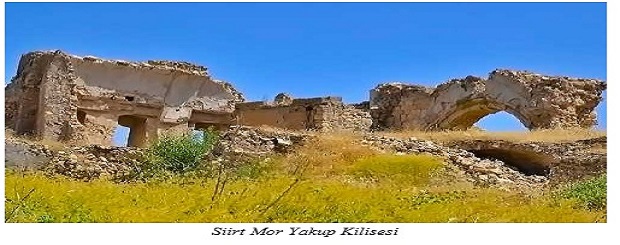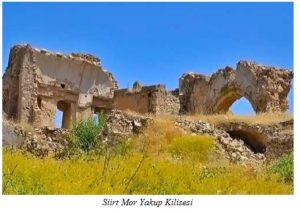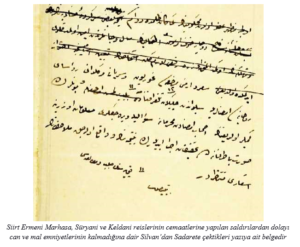
TC Sinem – Unknown Armenian History of Siirt – Unknown Armenian History of Siirt
Dec 26, 2015 – //medium.com//

Unknown Armenian History of Siirt
The name Siirt is referred to as “Seert” (three locations) in some sources. It is estimated that this name was given because the city was built on several hills. The name of Siirt is mentioned as Tiğrakert in some sources. Although it is said to be of Sami origin, it is also thought that the Armenian Tiğrakert may have turned into Sigrakert, Sigirt and eventually Siirt, respectively. Siirt’te18.
In the 16th century there were 5,600 Armenian households. Between 1800 and 1830, 10,000 of the 17,000 inhabitants were Armenians. Between 1830 and 1850, while 6,000 of the 15,000 inhabitants were Armenians, out of 7,442 people living in 1914, 3,320 were Kurds and 4,032 were Armenians.
Others were Turkish, Arab and Assyrian. In Siirt, Armenians had the Surp Tateos-Partoğimeos Apostolic Church, a Catholic and a Protestant Church. The center of the Diocese was the Saint Hagop Monastery. The province had 45 churches, 3 monasteries and 22 schools, spread over 146 settlements.

Mor Yakup Church was a common temple of Assyrians and Armenians around Siirt. It was used as a church on one side and a monastery on the other. The local people named Mor Yakup Church “Mîr Yakup” under the influence of Kurdish.
The former name of Eruh of Siirt was Bohtan. The name of Botan, one of the so-called provinces in which the PKK divides Eastern Anatolia according to itself, is in Armenian. Eruh City is also a very important Armenian settlement center in the region. According to the French researcher traveler Cuinet, there were 5.113 Armenians in Eruh in the 1890s.
According to the Patriarchate statistics in 1914, there were 3,393 people. The Armenians, scattered in 20 rural settlements, had 4 churches and 2 schools. Eruh, the administrative center of the accident, was where the Armenians were the busiest. Only 12 Kurdish families lived here for 2,412 Armenians.

Today, the number of Armenians, Assyrians and Nestorians living in Siirt by showing themselves as a Muslim Arab and Kurdish identity is quite high. That is why it is said that the mothers and grandmothers of many Arab and Kurdish origin in Siirt are of Armenian origin. This situation is not only seen in Siirt.
Arabized of thousands of Armenians in Turkey in Hatay, Urfa, Mardin were hidden in places like the Arab identity. Today, these Arabic-speaking communities launch themselves as Arabs. 1,100 Crypto Armenian families in Hatay, 1,200 in Siirt, 1,500 in Mardin show themselves as Arabs. In Muş, Sason, Kahramanmaraş and Gaziantep provinces, there are also many Armenians who show themselves as Arabs. The family of First Lady Erdoğan introduces themselves as an Arab in Siirt. Siirt has been one of the important cities of the Armenian Bagratunis in history.
There are many Hebrew origin names such as Lut, Suayb, Nili and Nasra in the Gülbaran family, which is the family of Emine Erdogan. These names are among the names used by the Armenian Bagratunis and the Nestorians.
In the notes of the European missionary agents who visited Siirt in the first half of the 19th century, it is written that one third of the central population of Siirt is Muslim, two thirds are non-Muslims (Armenians, Chaldeans, Syriacs, Nestorians and Jews) and all peoples live together without any problems.

medium.com/@tc_sinem_/siirt-in-bilinmeyen-ermeni-tarihi-962662f0119b
